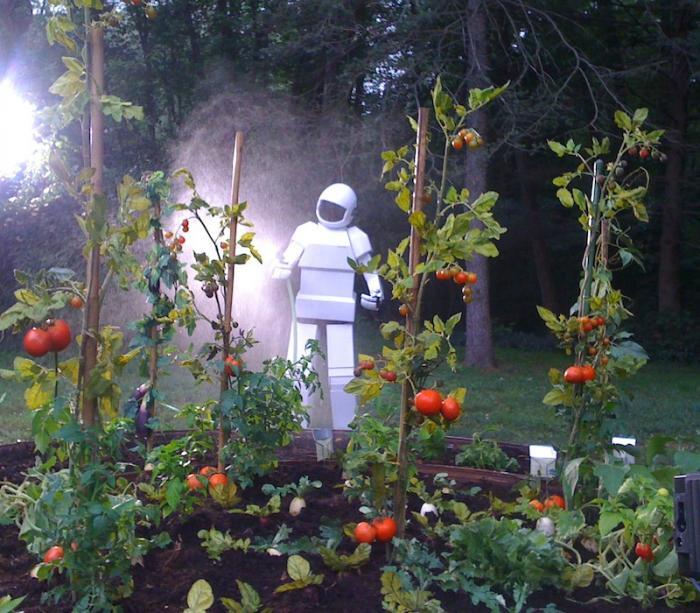What do gardens and robots have in common? Waiting…. Give up? They both make great math instructors!
Whether digging a garden or interacting with robots, students find themselves engaged (emphasis on this word “engaged”) in an activity that takes abstract math, a subject once found only on school blackboards or books, and puts it to work in a concrete and meaningful way.
Take for example the garden cultivated by teacher Nancy Rhodes’ fifth-grade kids in Corte Madera School in Portola Valley, California. For the last two years the kids have been laboring (“laboring” is likely too harsh a word) in what Ms. Rhodes calls “A Symbiotic Garden: Designed for a purpose.” Her first project aim was to have her students struggle with the question, “Can animals live without plants and can plants live without animals.” The students were required to design plant beds with the goal of attracting different animals. Again, some extra emphasis on the word “design” in the preceding sentence...
After all, as any gardener worth their salt knows, designing a garden plot requires more than grabbing a handful of seeds and throwing them on the ground. Every garden has a limited amount of room and the plants themselves differ in the space needed for healthy roots and sunlight. Some need shelters. Some need deeper soil than others. Water requirements differ with every species. No, it isn’t rocket science but any fifth-grader that has worked through a problem like the following is going to feel pretty good about themselves: The edge of a circular flower bed, 220 ft in diameter, needs mulch. How many cubic yards (yd3) of mulch do you need if you want the mulch to cover 3 ft in from the edge to a depth of 2.5 inches, all the way around?
Diameter = 220 ft
radius = 110 ft.
pi = 3.142
Area of a circle = pi x r2
Area of total bed = 3.142 x (110)2 = 38018.2 ft2
Area of inside bed = 3.142 x (110-3)2 = 35972.8 ft2
Area of ring needing mulch = 38018.2 - 35972.8 = 2045.4 ft2
Volume of ring (2.5 inches deep = 0.208 ft) = 2045.4 x 0.208 = 425.4 ft3
Convert cubic feet to cubic yards à 1 yd3 = 27 ft3 so 1 ft3 = 0.037 yd3
425.4 x 0.037 = 15.7 yd3 = 16 yd3
OR
1 yd3 = 325 ft2 to 1" deep
325 ft2 2045 ft2
1 yd3 = x
325x = 2045 x = 6.29 6.29 x 2.5" = 15.75 yd3 = 16 yd3
From: Dr. Leonard Perry, Univ. Vermont : Garden Math Sample Problems and Calculations
A garden then is certainly one great way to answer the question asked by nearly every student, “What do I need this math for?”
Here at RobotsLAB we don’t dig gardens, but we do develop robots that engage and instruct students in a manner that makes math interesting and concrete. Kids love robots. At least as much as they love gardening. And the big gain here for teachers is they don’t have to strain their backs, get sunburned, or dirty their hands while working on their lesson plan.


